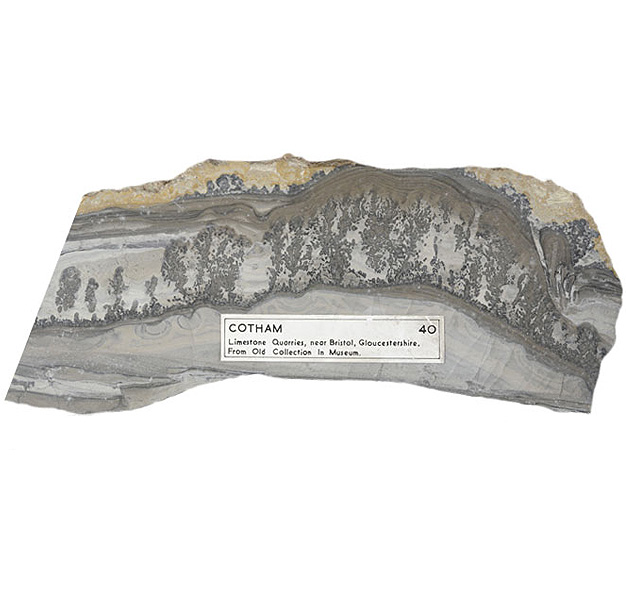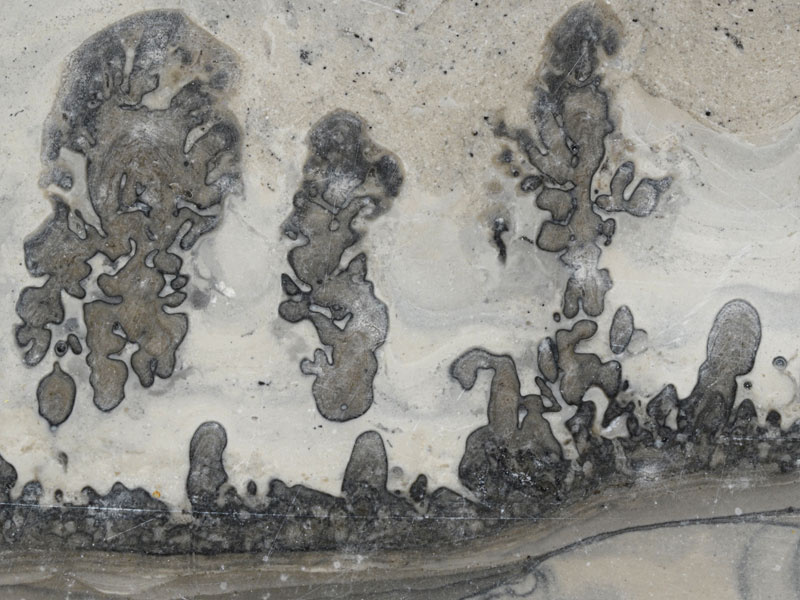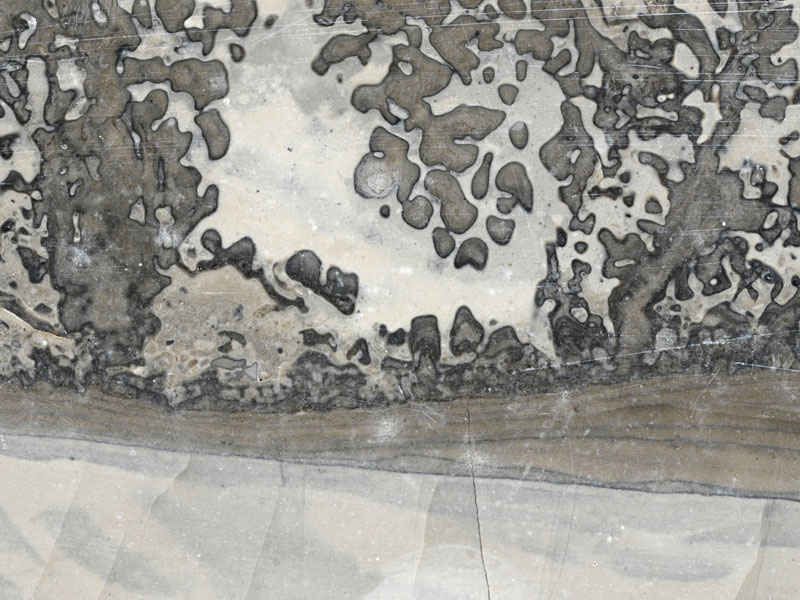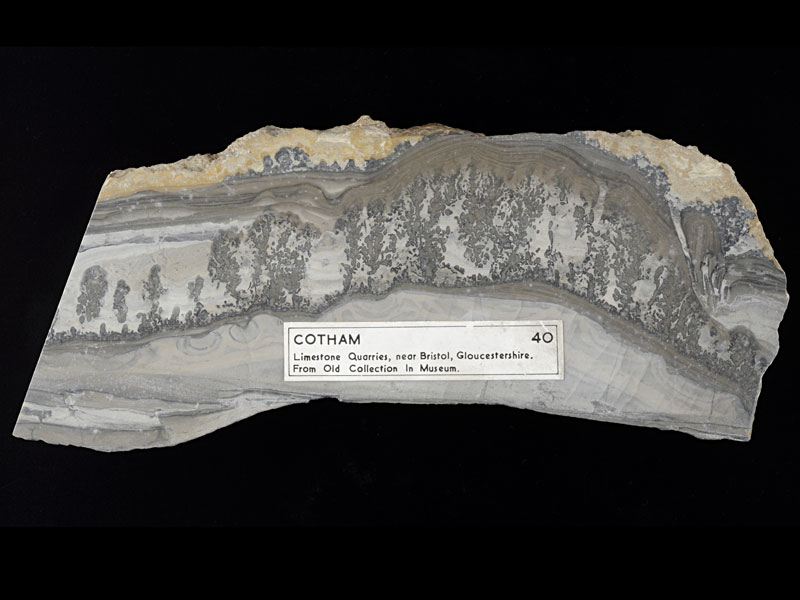
Fact sheet
This sample of uppermost Triassic (Rhaetic) age stromatolitic limestone comes from Cotham Quarries near Brstol, England. The same limestone horizon is found in south Wales and southwestern England in the area around Bristol. In SW England the horizon is named after Cotham House in Cotham, Bristol. When used as a decorative building stone this limestone is known as Cotham Marble or landscape Marble. Cotham Marble was particularly popular in Victorian times because polished surfaces have the appearance of a landscape with trees, and it is commonly made into decorative items including jewellery.
In thin section this sample appears a dark micritic layered limestone with some shelly fossils. The thin section contains one stromatolite (algal) growth and occasional bedding parallel calcite veins
Watson 1911 Building Stones; MO 1316; stromatolite
The United Kingdom Virtual Microscope (UKVM) collection consists of igneous, sedimentary and metamorphic rocks from around the UK.
It is intended as a teaching resource, helping to tell the story of the common rock types and how they form, and reflecting the history of the UK at the margins of the continent of Europe. The collection is a series of teaching sets, for example igneous rocks from the North Atlantic Igneous Province and SW England; high-temperature metamorphic rocks from Scotland and low-temperature metamorphic rocks from Wales; and sedimentary rocks, including English limestones and sandstones.









